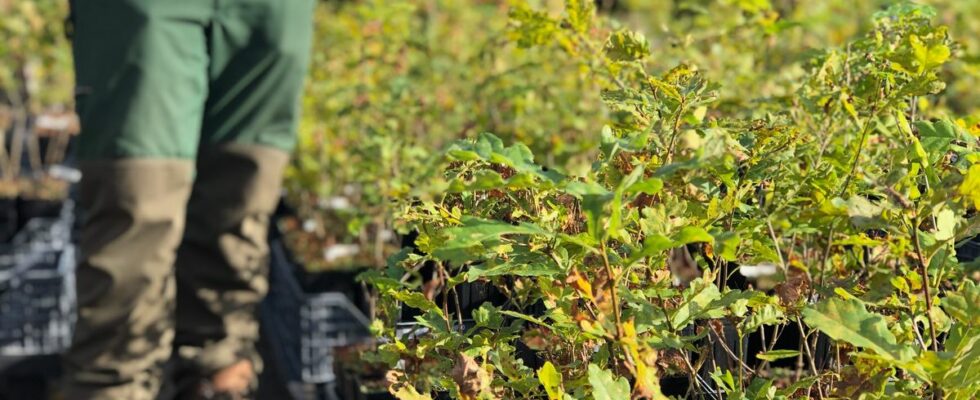They only measure a few tens of centimeters and still seem quite frail in the midst of the majestic century-old trees that surround them. In the Gâvre forest, the largest in Loire-Atlantique, a new species is nevertheless raising great hopes. Originally from Europe, more than 2,000 sequoia sempervirens plants, which can reach 35 meters in height as adults, were planted last year. “Some have dried up but others have made rejections, welcomes the National Forestry Office (ONF). In such compacted and stony ground, it was not obvious that they were so green. Will they continue to grow? Only the future will tell us. See you in several decades, therefore.
Testing the resilience of certain species in the forest so that the environment can cope with climate change is the objective of these islands of the future, installed throughout France as part of the Recovery plan of State. “With a hotter and drier climate, we have to find plans B in the event of dieback, says Nicolas Jannault, director of the ONF Pays-de-la-Loire. These experimental plantations aim to test species that do not exist today in our forests, in order to see if they could be adapted and thus to have the widest possible range” In the Pays-de-la-Loire , already 13,000 small redwoods have been planted. While Turkish pines and Atlas cedars will appear in the region, the ONF is betting more on new provenances of oaks, further south. It must be said that there are concerns about the resistance of the sessile oaks that we come across today mainly in the Gâvre forest.
Heat resistance and wood quality
It is a few kilometers away, in a vast nursery of Guémené-Penfao, that the majority of the hundred or so islets of the future of France have been carefully selected for their ability to resist heat, bio-aggressors, such as insects or fungi, but also the quality of their wood. The carob tree, a Mediterranean tree, for example, has not overwintered and has therefore disappeared from greenhouses unlike eucalyptus, “an interesting species although very sensitive to fires”, we explain here.
In this laboratory-like nursery, seeds are also sorted as part of “assisted migrations”, these plantations of trees (of the same species) from the south in forests in the north with the aim of collecting more and more seeds. more resilient to climate change. “To preserve the resource, we must look for all the adaptation factors insists Olivier Forestier, head of the nursery.
According to the ONF, around 300,000 hectares of public forests in France are already clearly suffering from climate change. Should we therefore accelerate their replacement, at the risk of distorting the environment, as feared by some actors ? “The islands of the future represent really very small areas, wants to reassure Nicolas Jannault. We seek natural regeneration as much as possible, but it is essential not to put our eggs in one basket, by working on other species that we can use when the time comes. »

